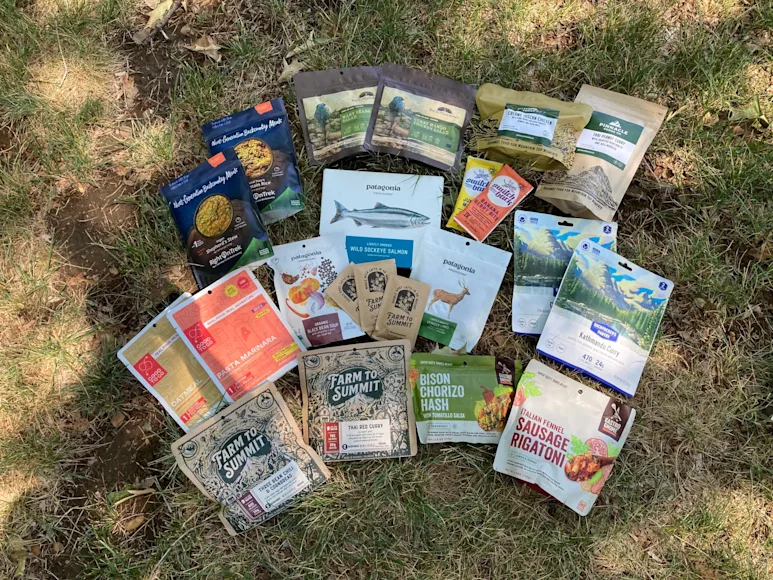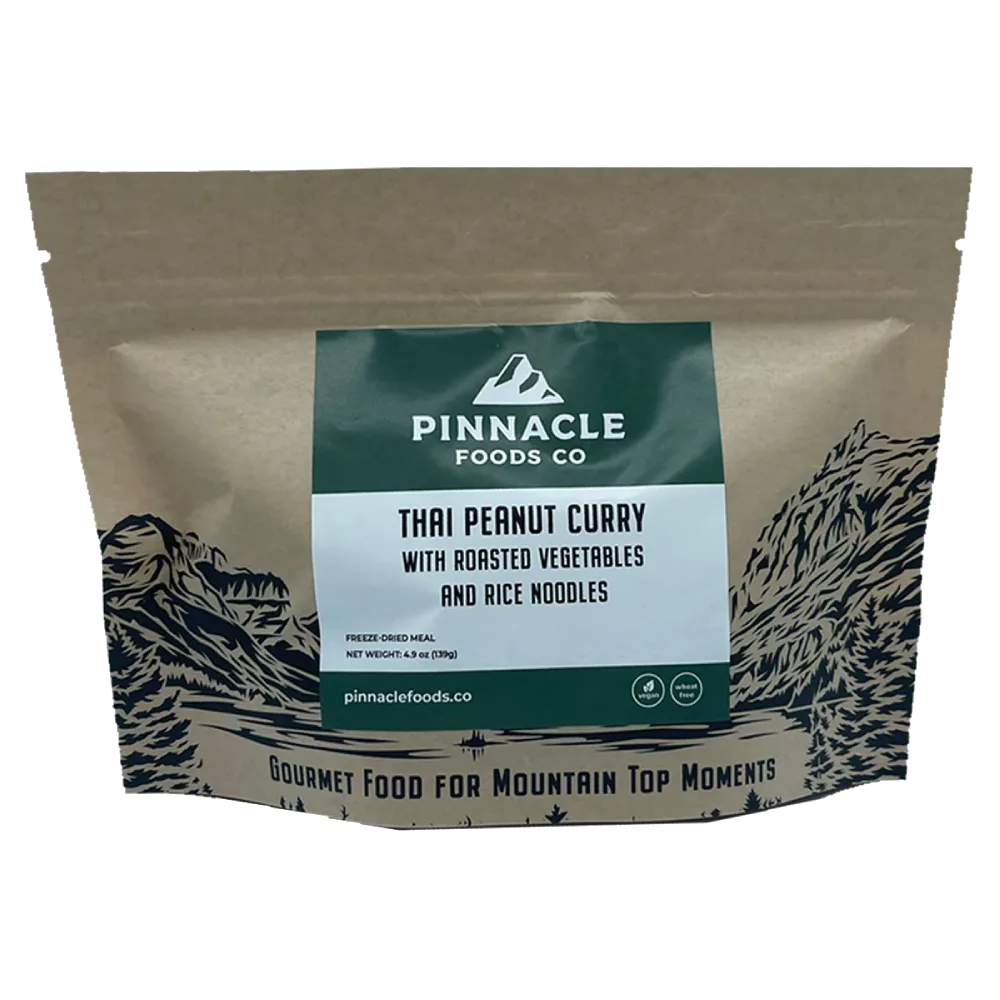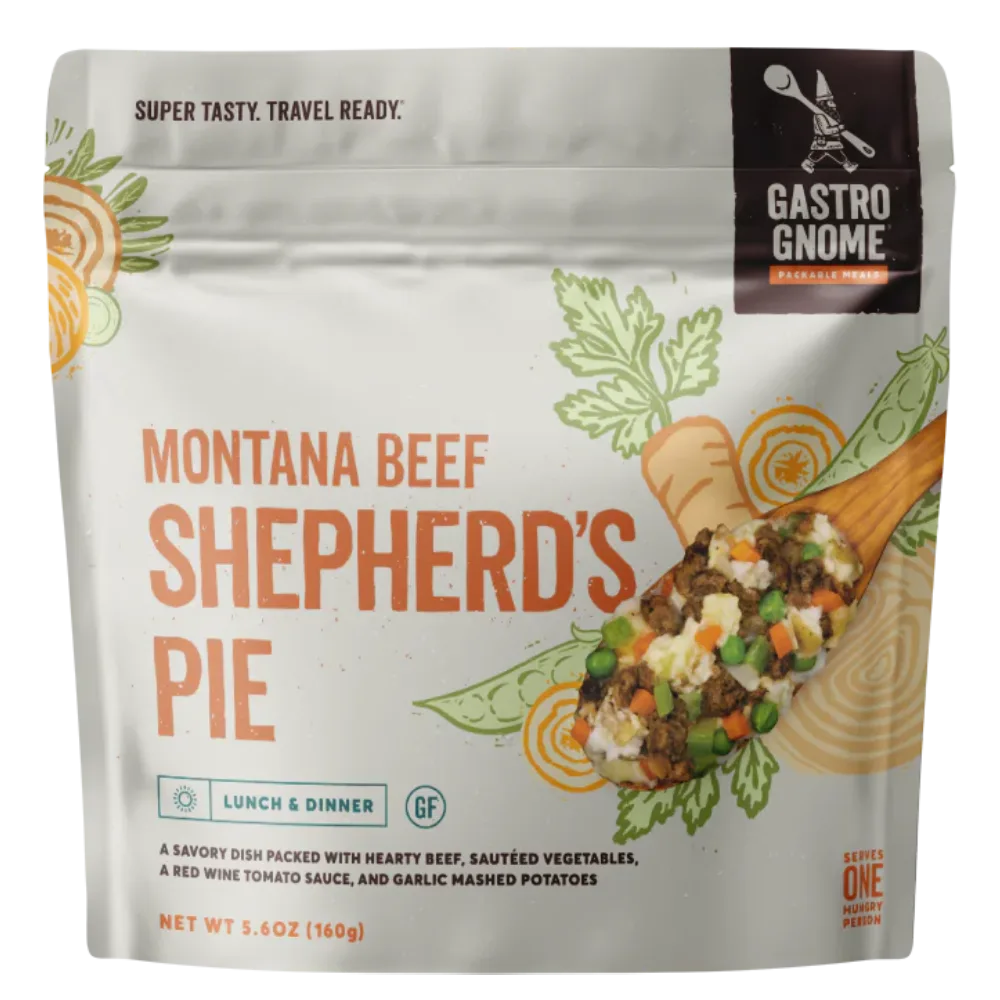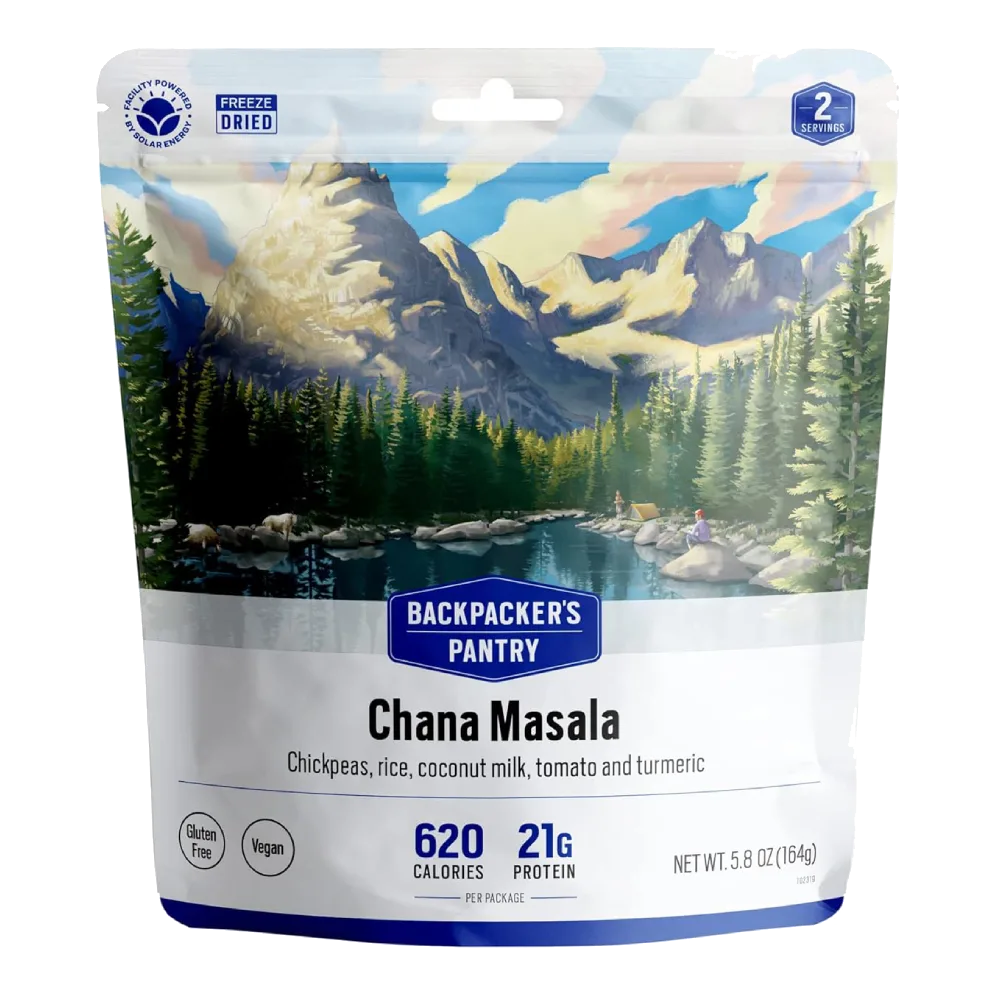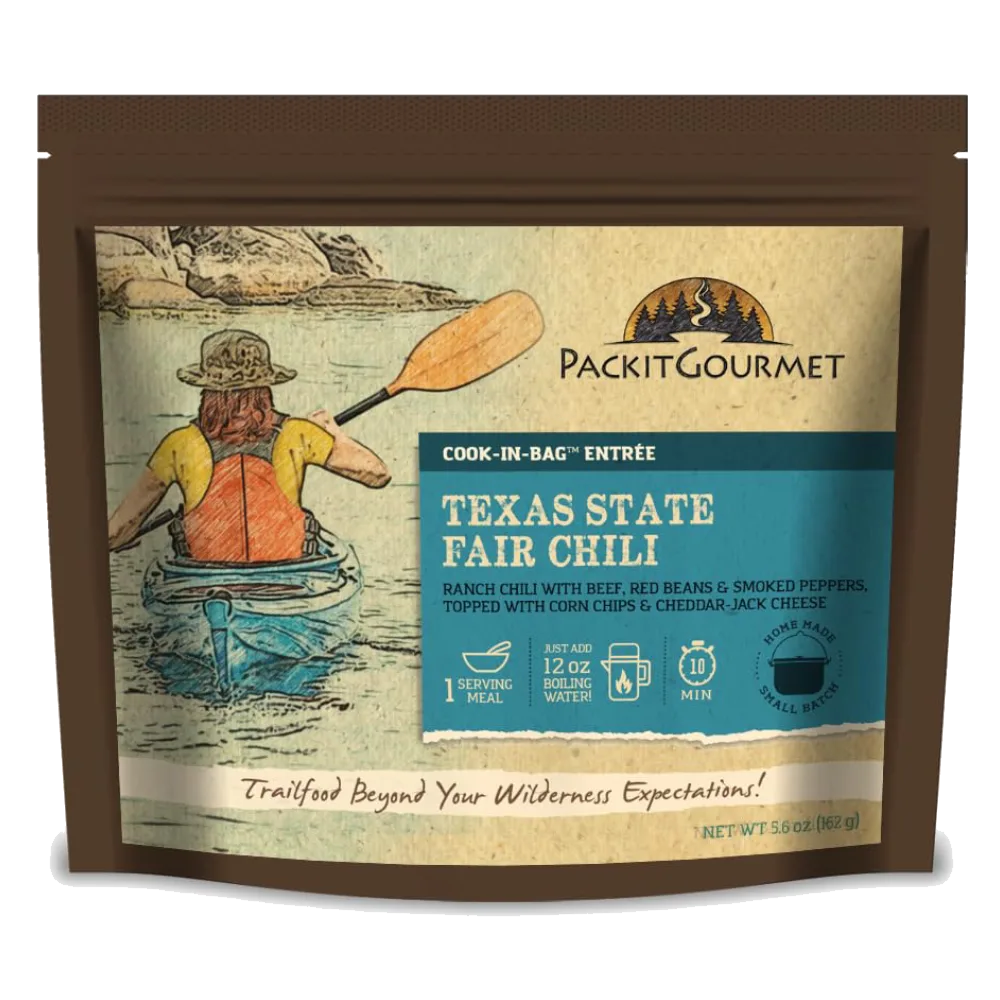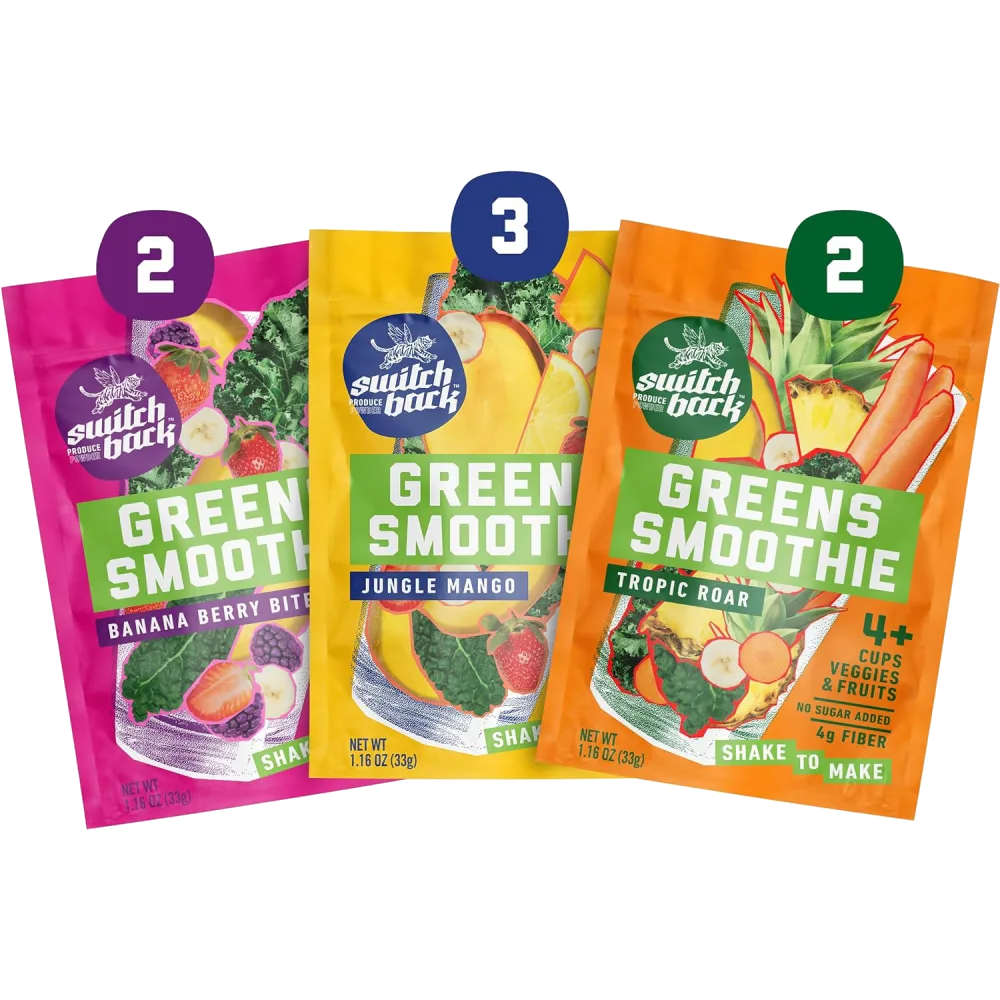We may earn revenue from the products available on this page and participate in affiliate programs. Learn more ›
The backpacking meals you eat on the trail can make or break the experience, which is why trail food is one of my priorities when planning. Quality food is not only necessary to maintain energy and replenish calories, but it can bring a layer of comfort and joy to long hard days of trekking. Pre-packaged backpacking meals have improved leaps and bounds even in the last five years, and honestly, until recently, you’d rarely catch me packing these freeze-dried or dehydrated meals. Traditionally, they were mushy and lacked flavor, but as more people begin to enjoy a variety of outdoor experiences, it seems the scope of backpacking meals has grown as well.
Now, it’s possible to find a meal anyone can love, from breakfast to an evening dessert. Companies have diversified their packaged food options to cater to meat eaters, plant-based eaters, gluten-free, and even paleo and keto diets. To help you make the right choice for your next camping trip, we spent a few days trying out the best backpacking meals in a blind taste test—here are our results.
Best Overall: Pinnacle Foods
Best Tasting: Gastro Gnome
Best Freeze-Dried: Backpacker’s Pantry
Best Breakfast: Farm to Summit
Best Cold Soak: Packit Gourmet
Best Snacks: Patagonia Provisions
Best Smoothie: Switchback
Best Bundle: Good to Go
Best Budget: RightOnTrek
How We Tested Backpacking Meals
Going into this article, I had a good idea of the most popular backpacking food brands. After doing some initial research and chatting with companies, I narrowed it down to a few select options for testing. Since I have several dietary restrictions and allergies, I knew I couldn’t do this test alone. Plus, food is a very subjective topic, and everyone has personal preferences when it comes to flavor and taste. So for this article, I conducted a blind taste test with four additional testers.
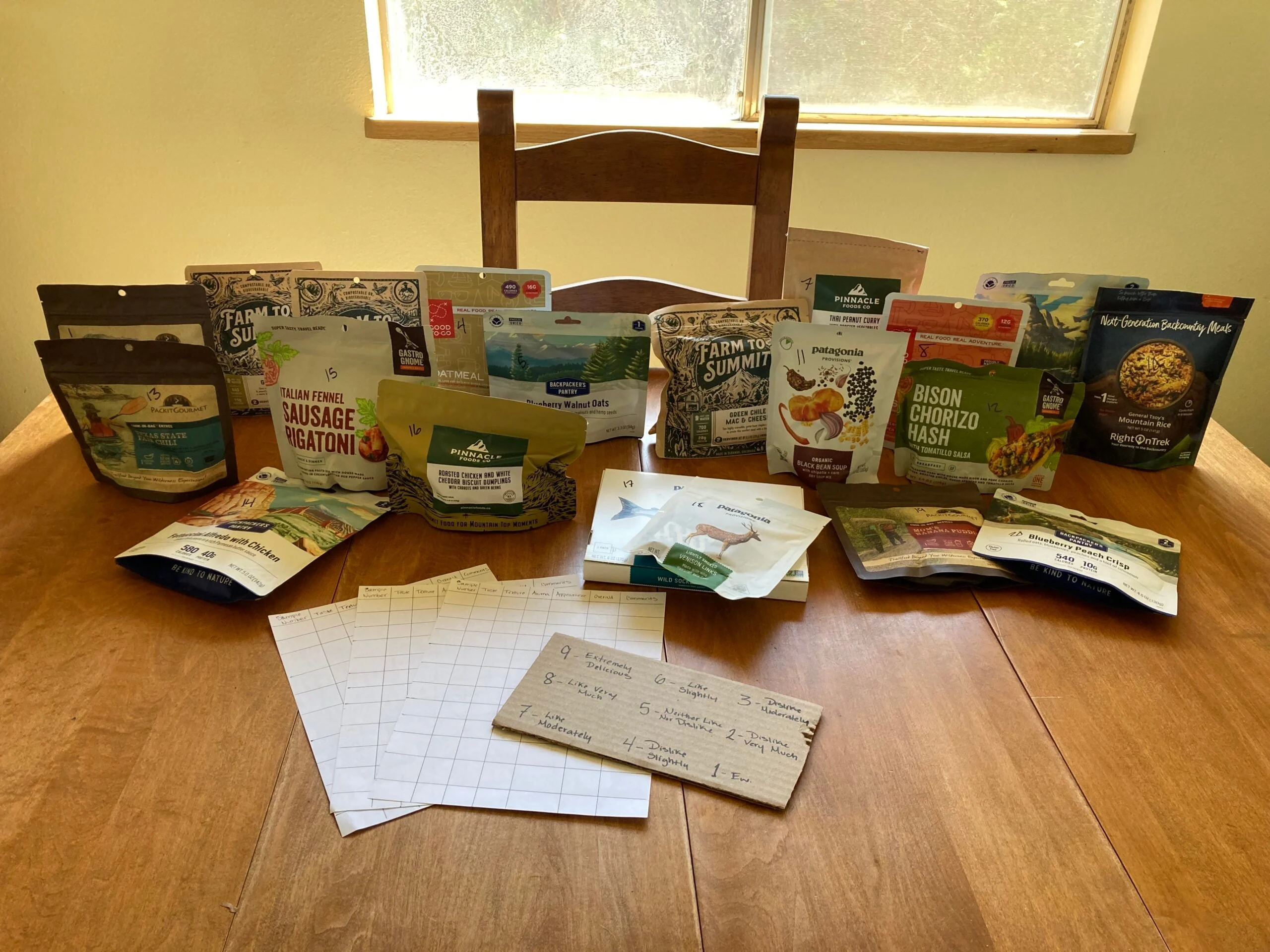
Preparing for the blind taste test (Photo/Meg Carney)
Each tester tried 21 samples of the backpacking meal or snack without knowing the brand or contents of the meal. All of the samples were tested using a 9-point hedonic scale with the following categories:
Taste
Texture
Aroma
Appearance
Overall
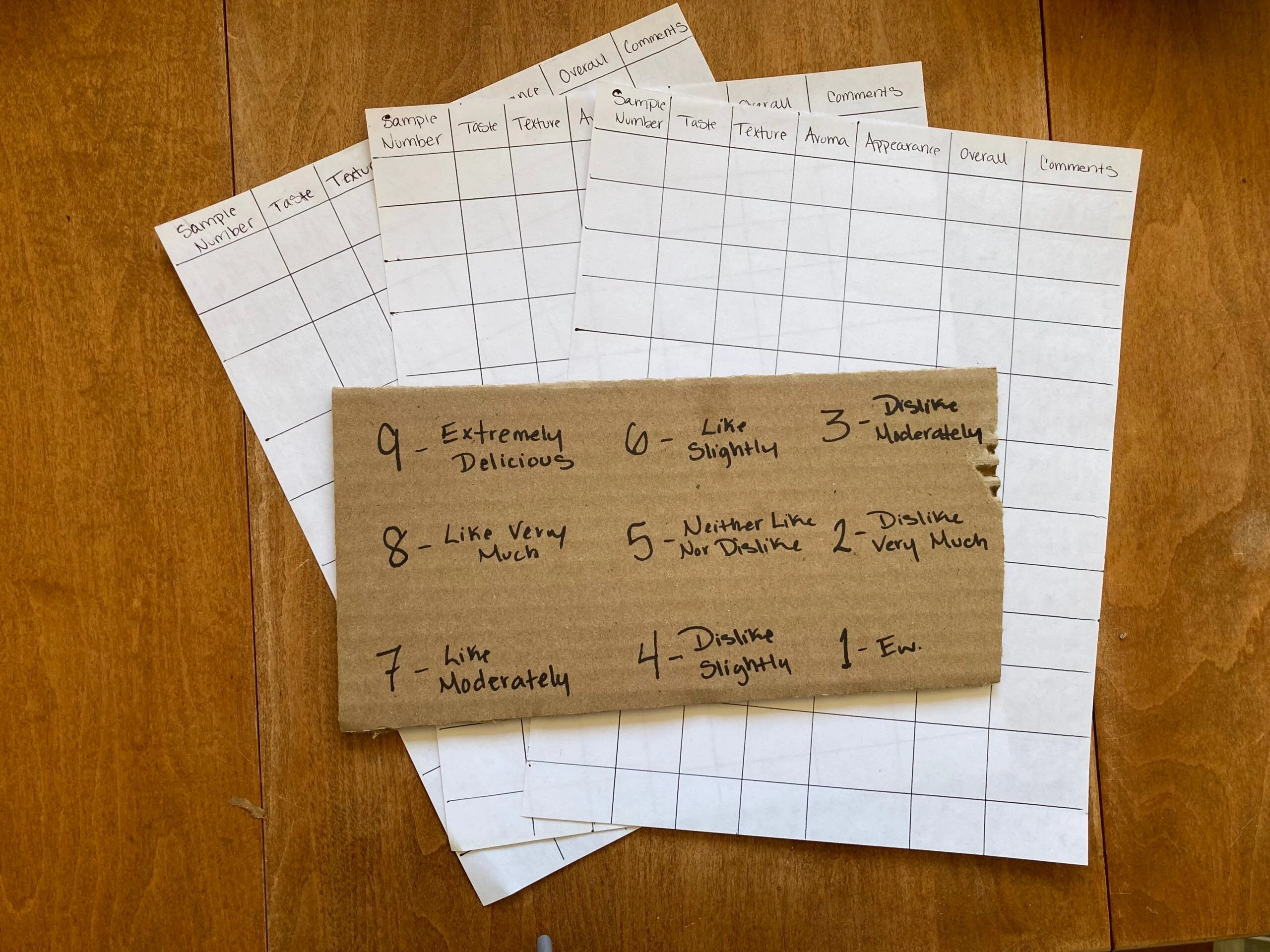

On this scale, a 1 represents the lowest score while 9 is the highest. A rating of 5 is neutral. I also tested the meals during this time but could only try five because of my allergies. Once the data was collected, I found the average for each sample and categorized them accordingly.
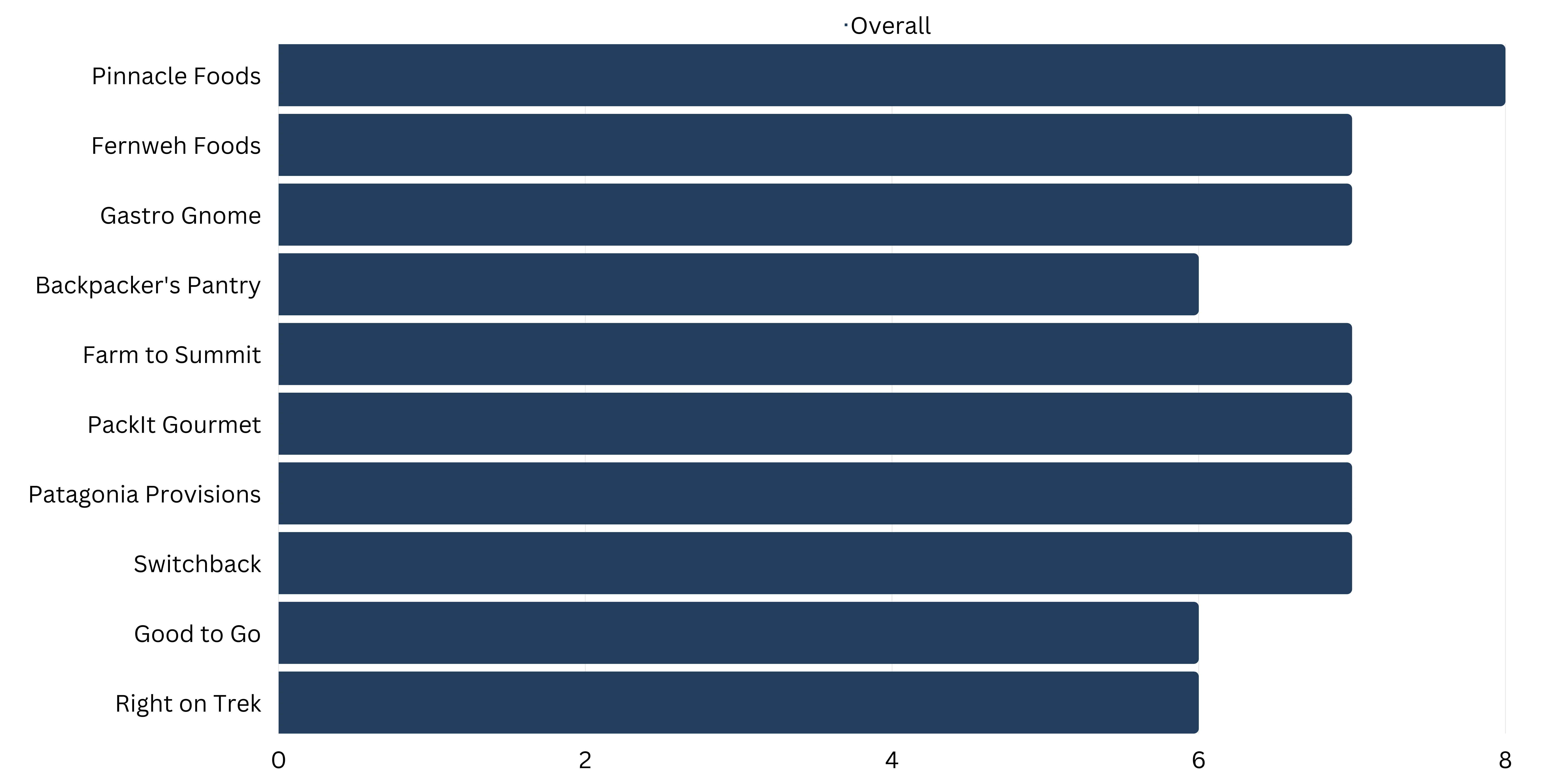
Although some individual ratings were a 9, due to averages, the highest score any brand received was an 8– Meg Carney
Beyond the flavor of the food, I looked at each company’s offerings regarding serving sizes, ingredient sourcing, packaging materials, weight, calories, cook time, price, and dietary options.
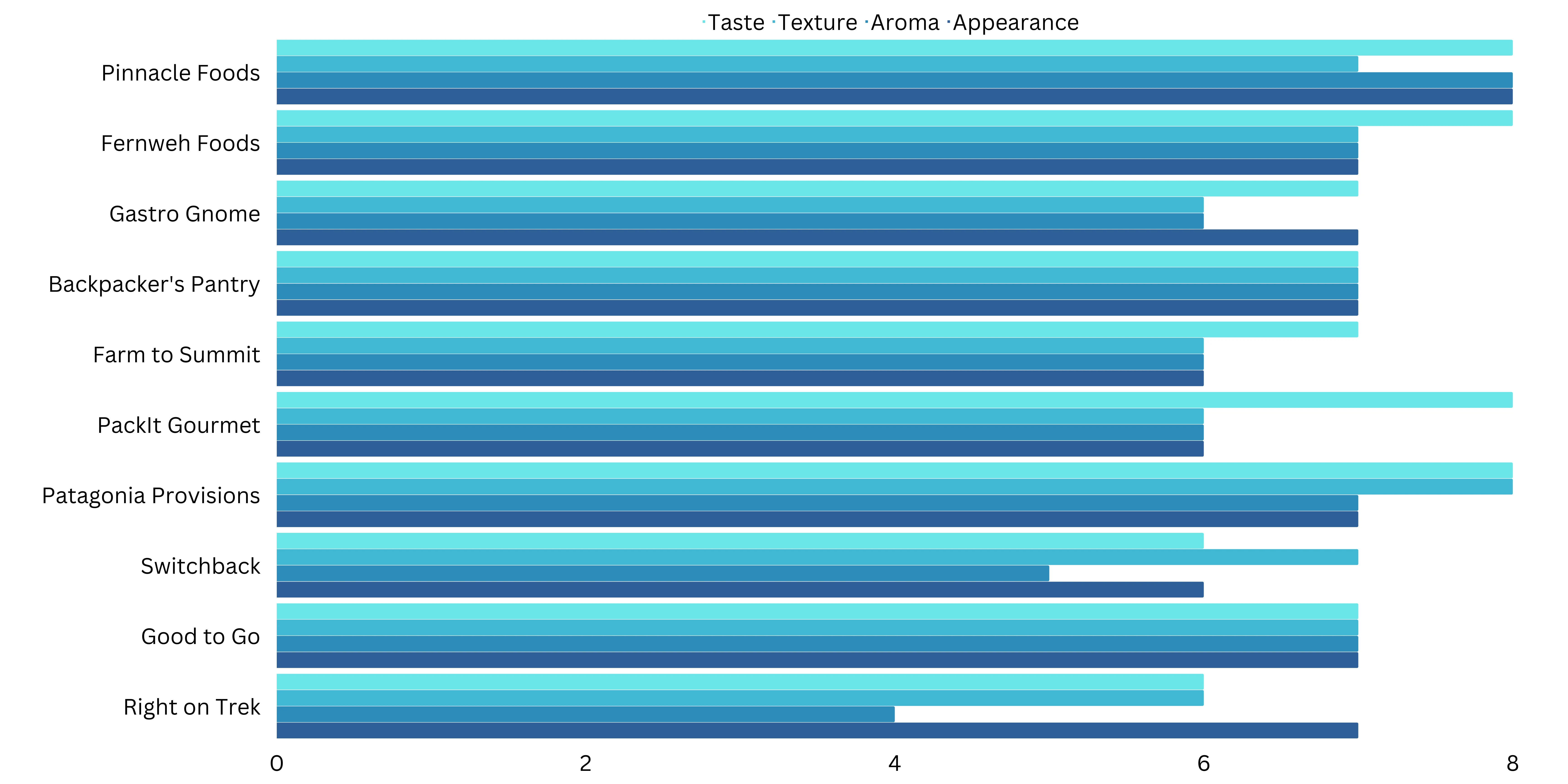
Best Overall: Pinnacle Foods
Specs
Cooking Method: Pouch
Average Cook Time: 12 minutes
Package Materials: TekPak Omnidegradable (paper and bio-foil) or Retort Pouch (layered polyester, aluminum foil, and polypropylene)
Dietary Options: Vegan, gluten-free
Meal Options: Breakfast, dinner
Pros
Made in the USA
Generous serving sizes
Efficient cook time
Excellent calorie density
Real food and great flavor
Cons
Would be nice to see more sustainable product packaging across the board
High in sodium
Across the board, all of our taste testers ranked the Pinnacle Foods backpacking meals as their favorites. In regards to the chicken and white cheddar biscuits recipe, one person said, “If you just served this to me without context, I wouldn’t even know this was a backpacking meal. It’s that good.” The flavor profiles of these meals are close enough to a home-cooked meal with hearty portions and a high-calorie density, perfect for long trail days.
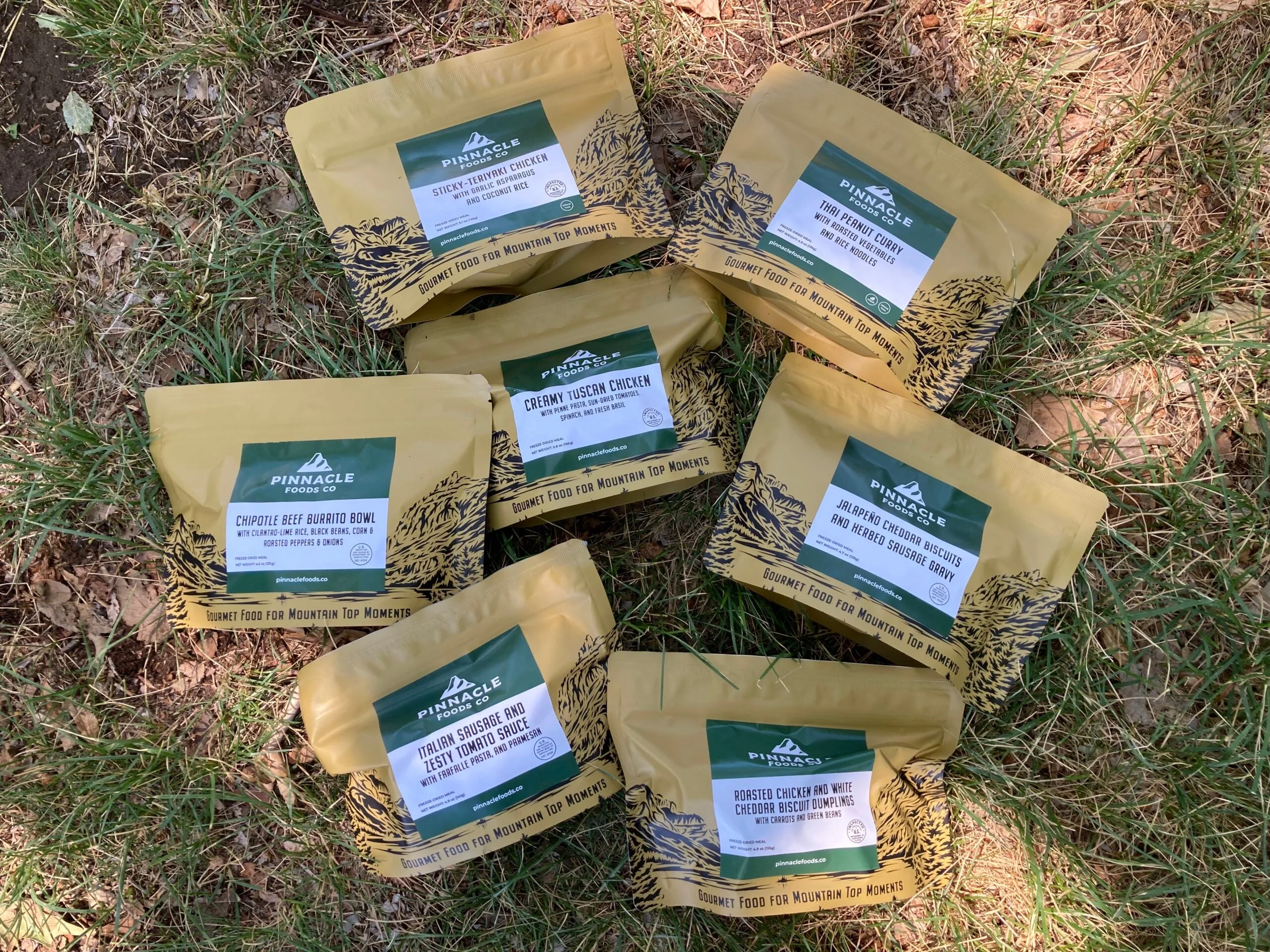
Pinnacle Foods produces all of its food in North Carolina. One of the founders, Ben, has a background in culinary arts so he designs all of the recipes—hence the incredible flavor profile. The brand offers breakfast and dinner entree options in either omnidegradable packaging or the classic retort pouches. While the omnidegradable pouches are good in theory, they are only actually compostable with the appropriate microbes available. Still, they are one of the more sustainable packaging options for backpacking meals out there. These packages also have their downsides. First, they’re taller than their retort pouches, so eating out of the packages or even stirring them while cooking is harder. Second, they won’t keep as long and they aren’t water-resistant, so you have to be careful how you store them.
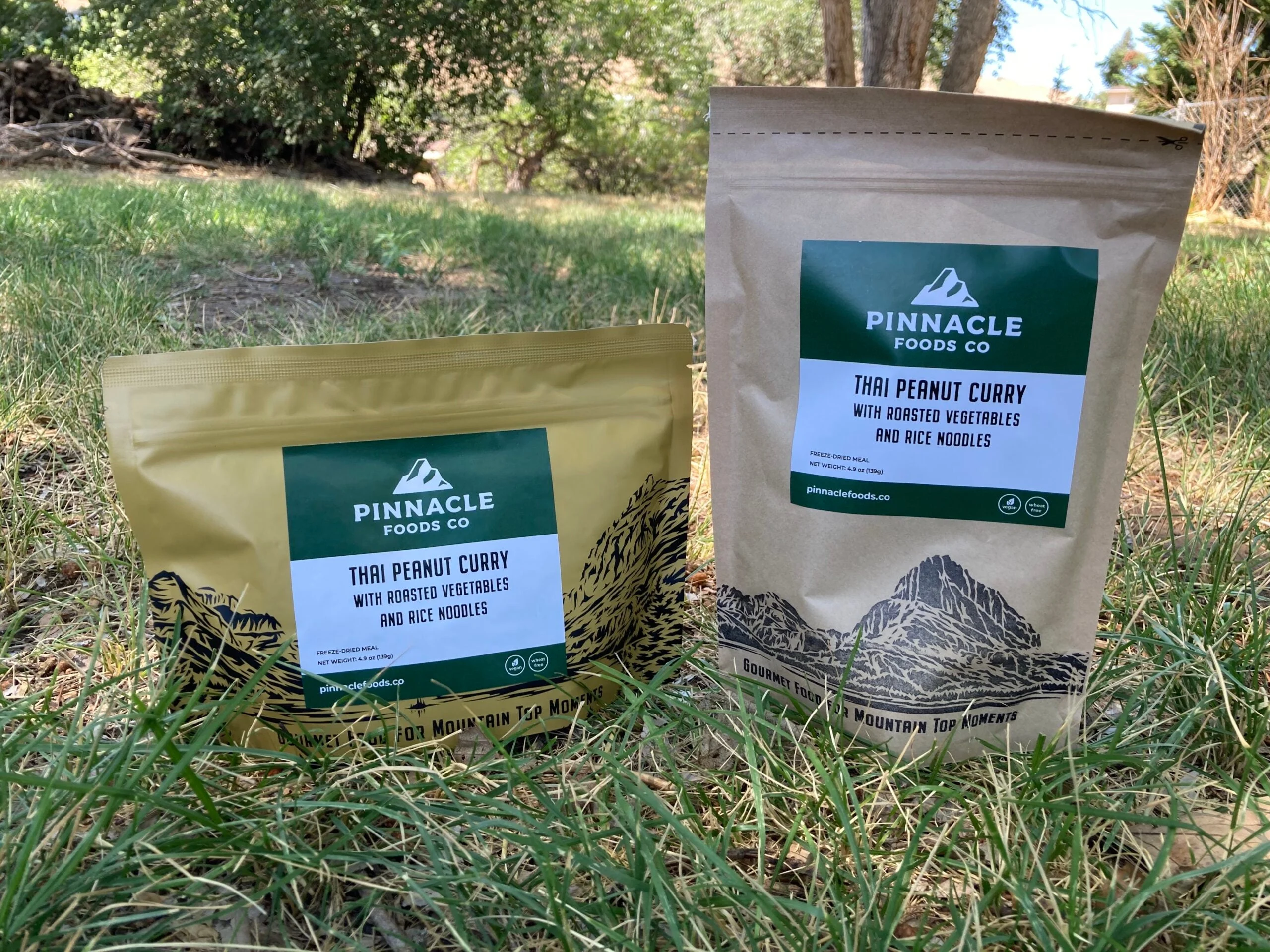
The meals themselves are high in sodium compared to some other brands, which could be a pro or a con depending on the hike and personal preferences. I eat a lot of salty foods on the trail, so I am okay with the sodium content. The cook time within the pouches was relatively consistent but will likely be longer at higher altitudes.
Overall, for the meal size, flavor profiles, and nutritional value, Pinnacle Foods offers meals sure to satisfy your trail hunger.
Best Tasting: Gastro Gnome
Specs
Cooking Method: Pouch
Average Cook Time: 10 minutes
Package Materials: Retort pouch
Dietary Options: Vegan, gluten-free, dairy-free
Meal Options: Breakfast, lunch, dinner, desserts, coffee
Pros
Made in the USA
Recipes sourced locally when possible
Surprisingly complex flavor profiles
Excellent variety of meal options
Short packages are easy to eat out of
Fast cook times
Cons
Would be nice to have more information on packaging and sourcing on the website
More expensive
Limited plant-based options
Gastro Gnome brings a unique restaurant-level eating experience to the outdoors. While Gastro Gnome backpacking meals topped the charts regarding flavor, calories, and cook time in our tests, they are one of the more expensive options. The Italian Fennel Sausage Rigatonia was one of the meals during our testing that we all loved for the spices and ingredients. It ranked among the highest in all categories, including texture, which can be hard to maintain with a dehydrated pasta dish.
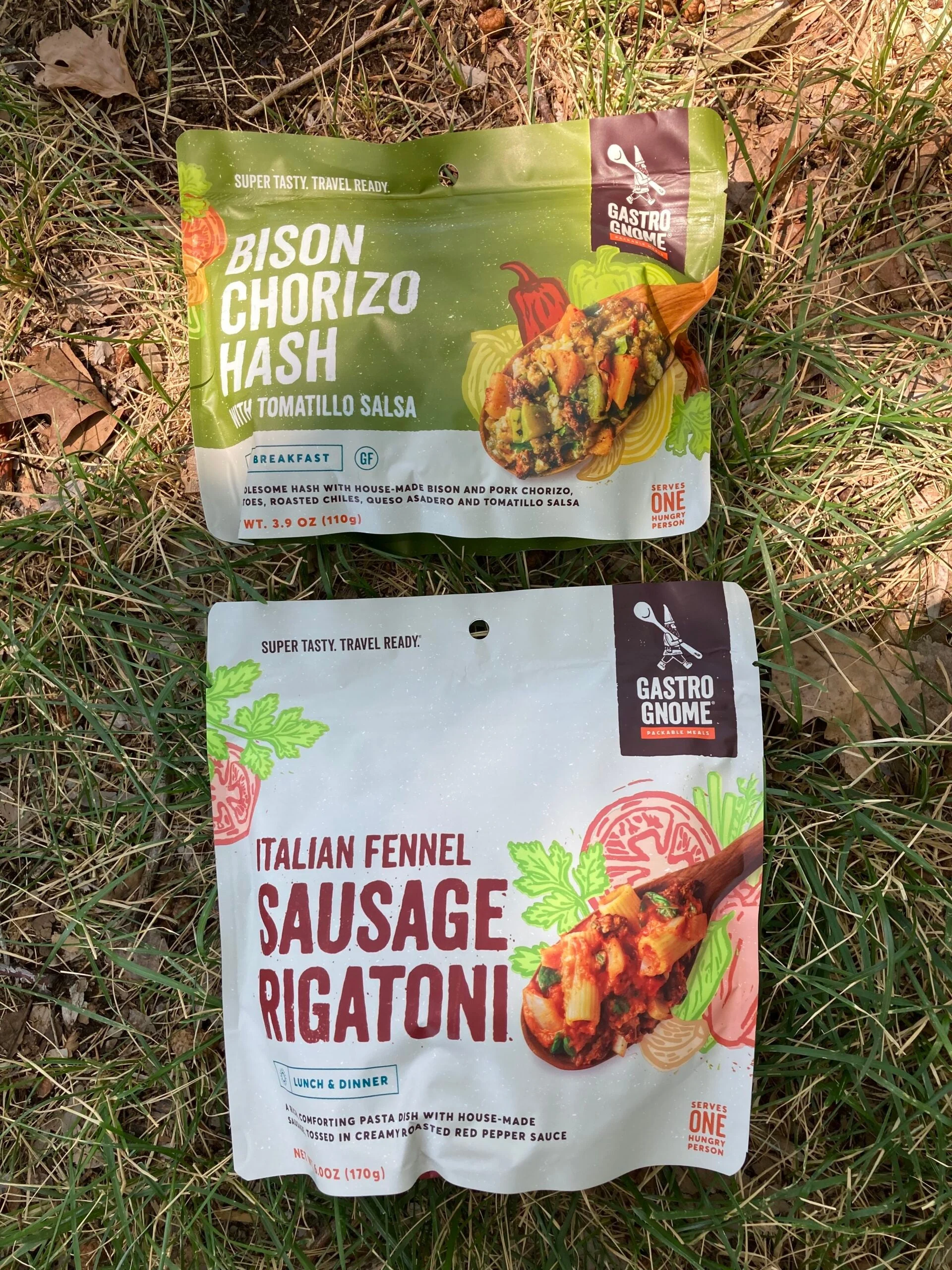
According to the founder and chef, Shannon Waters, “Flavor drives everything we do. With the Rigatoni, we hand make every batch of Italian Sausage and cartelize it to perfect before making a roasted red pepper sauce to toss the pasta in. The sauce is finished with bright basil and herby parsley for a pop of freshness that is so surprising in the woods.” Ingredient sourcing starts locally in the Gallatin Valley of Montana, where their shop is located. They source as locally as possible and work closely with farmers and ranchers, allowing them to maintain exceptional quality in all of their dishes.
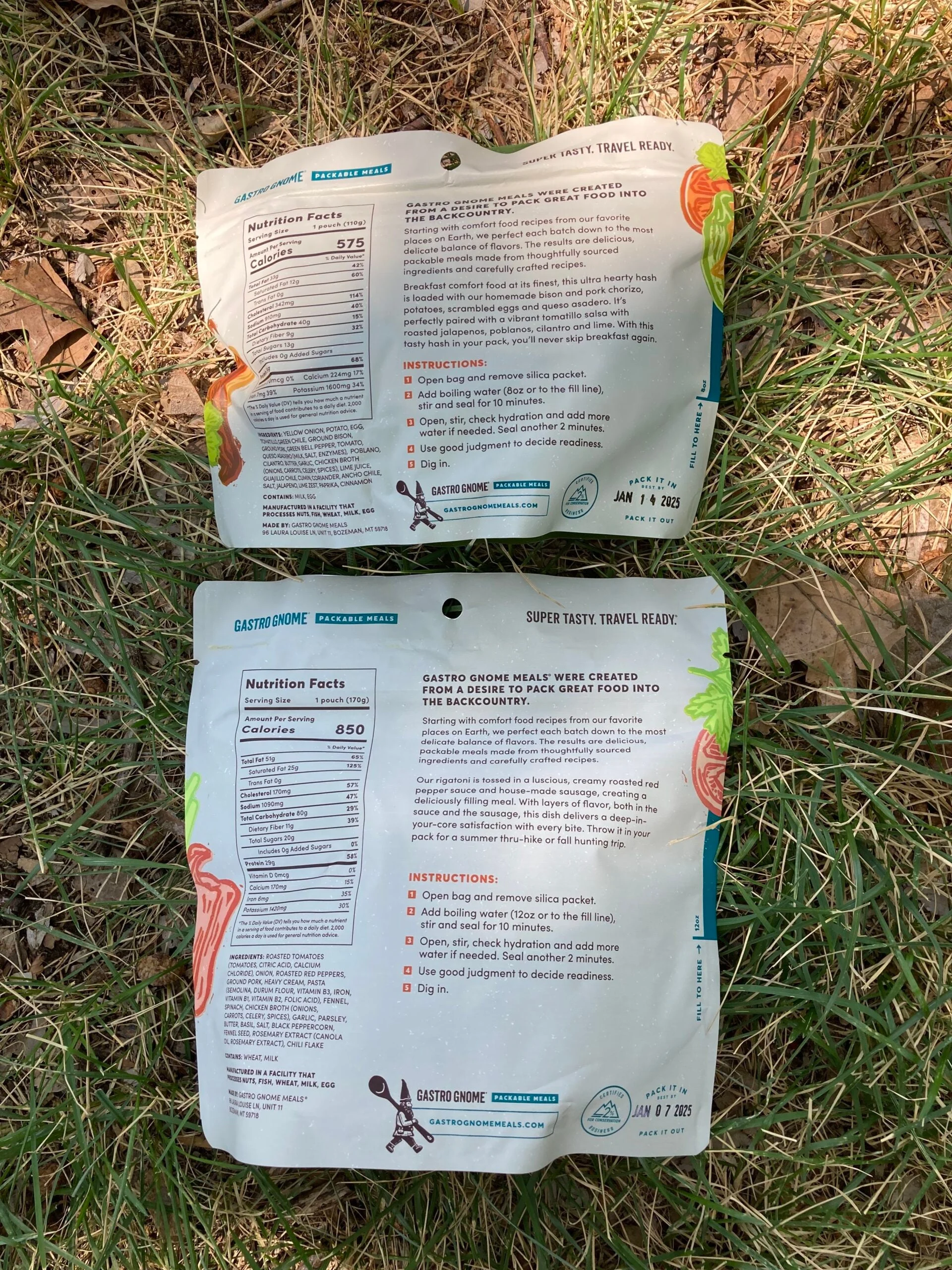
It would be nice to have more information regarding their detailed recipe development process, ingredient sourcing, and packaging materials on their website so it’s easy for consumers to find. The packaging is nice and keeps the food fresh. Plus, it is way easier to eat out of these pouches than tall packages. While their recipe options seem stellar, I’d like to see a more diverse collection of plant-based meals.
Best Freeze-Dried: Backpacker’s Pantry
Specs
Cooking Method: Pouch
Average Cook Time: 15 minutes
Package Materials: Retort pouches
Dietary Options: Vegan, gluten-free, dairy-free, nut-free, high calorie
Meal Options: Breakfast, entrees, dessert
Pros
Wide variety of meal and dietary options
Consistent cook times
Great value for the price
Good texture for freeze-dried meals
Excellent option for anyone with dietary restrictions or allergies
Cons
Longer cook time than most dehydrated meals on our list
Would be nice to see updated packaging
Freeze-dried meals get a bad rap—some of them lack decent flavor and the texture can be off-putting. But Backpacker’s Pantry has somehow managed to nail freeze-dried backpacking meals, thanks to a few decades of dialing in their recipes to offer one of the widest selections of meals and ensure quality consistency across all of their recipes. For someone with a lot of dietary restrictions, I appreciate the large variety of meal choices they offer, which also makes it easy to find something the whole family (even the kids) can enjoy while camping.
During the blind taste test, Backpacker’s Pantry ranked higher than many other brands for the food texture. After trying the Chana Masala meal, one tester even commented that she’d definitely eat this again, which can’t always be said for a backpacking meal (especially when eating it off the trail). All of the entrees tested ranked well, but the breakfasts were often marked as bland, which surprised me. When testing the Blueberry Peach Crisp, many agreed they’d prefer it as a breakfast option rather than a dessert because of its large fruit chucks and exceptional flavor compared to their breakfast oatmeal.
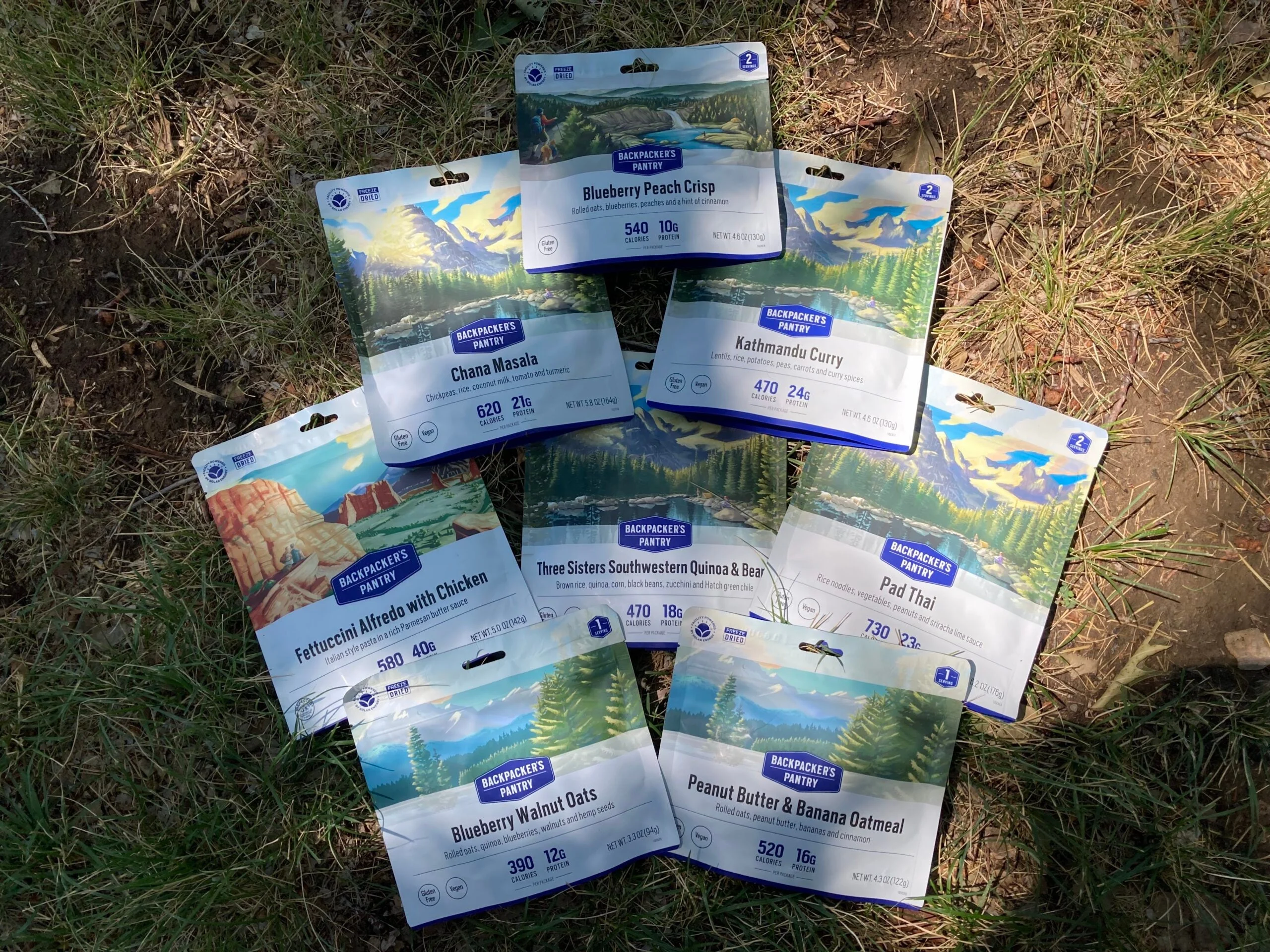
Overall, Backpacker’s Pantry is a reliable brand. They may not have the most complex flavors, but they offer excellent value with a wide variety of meals that suit most backcountry adventures.
Best Breakfast: Farm to Summit
Specs
Cooking Method: Pouch
Average Cook Time: 15 minutes
Package Materials: Omnidegradable
Dietary Options: Vegan, gluten-free
Meal Options: Breakfast, lunch, dinner, coffee
Pros
Good meal variety
Generous portions
Upcycled imperfect produce
Environmentally-minded company
Made in small batches
Well-priced for the value
Cons
Meals consistently tasted better with some additional salt
Shorter shelf life due to packaging
Farm to Summit is a gourmet backpacking meal company that makes meals for any time of day in the backcountry, including some fantastic instant latte options to really up your coffee game. Their recipes are made in small batches with options for virtually any dietary preference. With backgrounds in agriculture and ecology, Farm to Summit founders Jane and Louise strive to source from small farms and reduce food waste by incorporating imperfect produce rejected from other buyers due to deformities, scars, or ripeness. In 2022, 32% of all produce used in their meals was upcycled, saving it from becoming food waste in the landfill.
During testing, all of the Farm to Summit backpacking meals were simple and easy to rehydrate, but they required more stirring than other meals to ensure a good consistency. Of all the breakfast meals, our testers especially liked the green chili cheddar grits, giving the dish incredibly high marks in the taste category. We also gave the green chili mac and cheese meal a decent rating, but be sure to drain it well before adding the cheese, or you may be disappointed. Our testers’ only consistent critique about all of the Farm to Summit dishes was that they tasted better with a bit more salt.
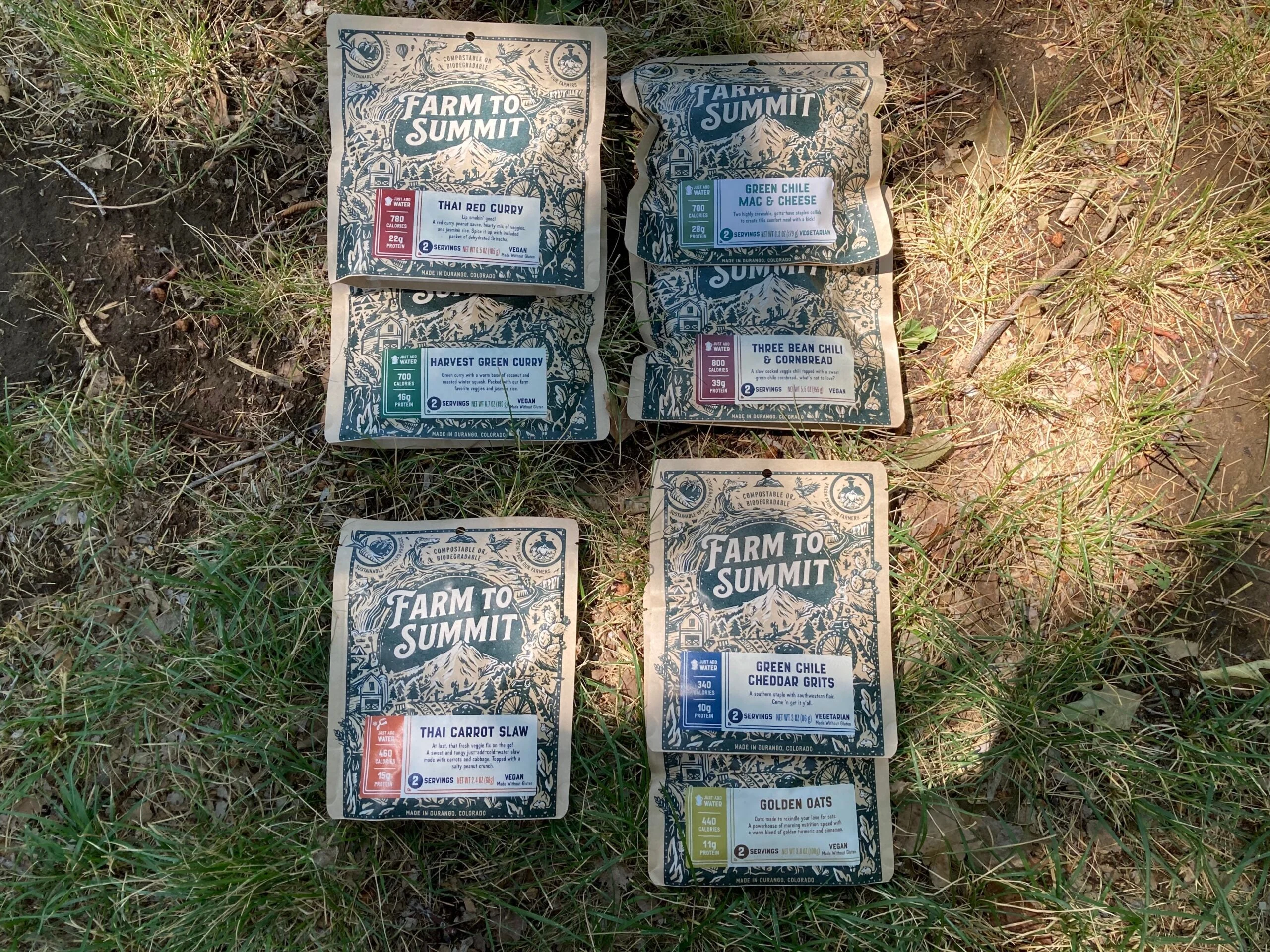
While they were not our number one pick, they ranked relatively high within all of our categories. Like the other brands, their use of omnidegradable packaging can cut down on the shelf life of the food, but it is a more sustainable option than traditional backpacking meal retort pouches.
Best Cold Soak: Packit Gourmet
Specs
Cooking Method: Pouch
Average Cook Time: 10 minutes
Package Materials: N/A
Dietary Options: Vegan, keto, gluten-conscious, dairy optional
Meal Options: Breakfast, lunch, dinner, desserts, snacks, drinks
Pros
Offers both dehydrated and freeze-dried options
Has cold soak meals
Also sells individual dehydrated and freeze-dried ingredients
Good resources on blog for camp cooking
Variety of meals to choose from
Cons
No explicitly gluten-free meals, only gluten conscious
Lacks transparency regarding sourcing and packaging materials on website
Price
Chosen as the best cold soak meal option, Packit Gourmet offers way more than that. Still, cold soak meals are hard to come by in the pre-made backpacking meal world, so it is worth noting when you find a good one. Their online marketplace has an extensive stock of backpacking foods ranging from pre-made meals to individual dehydrated or freeze-dried ingredients. I like buying individual ingredients to make my meals, so this is nice to see a family-owned company branching into this market.
Of all the packaged food we tried for this test, Packit Gourmet ranked the highest for the cold soak and dessert options. I didn’t include a dessert category for this list, but if I did, PackIt Gourmet would’ve taken the cake. Their cold soak meals are popular for lunch while backpacking and include deli-smoked roast beef, curry mango chicken salad, and many beans salad—the mango curry chicken salad pairs well with crackers or a tortilla (not included). Regardless of whether it was a cold soak meal or one that required boiling water, the cook times were consistently under 20 minutes, with an average of 10 minutes.
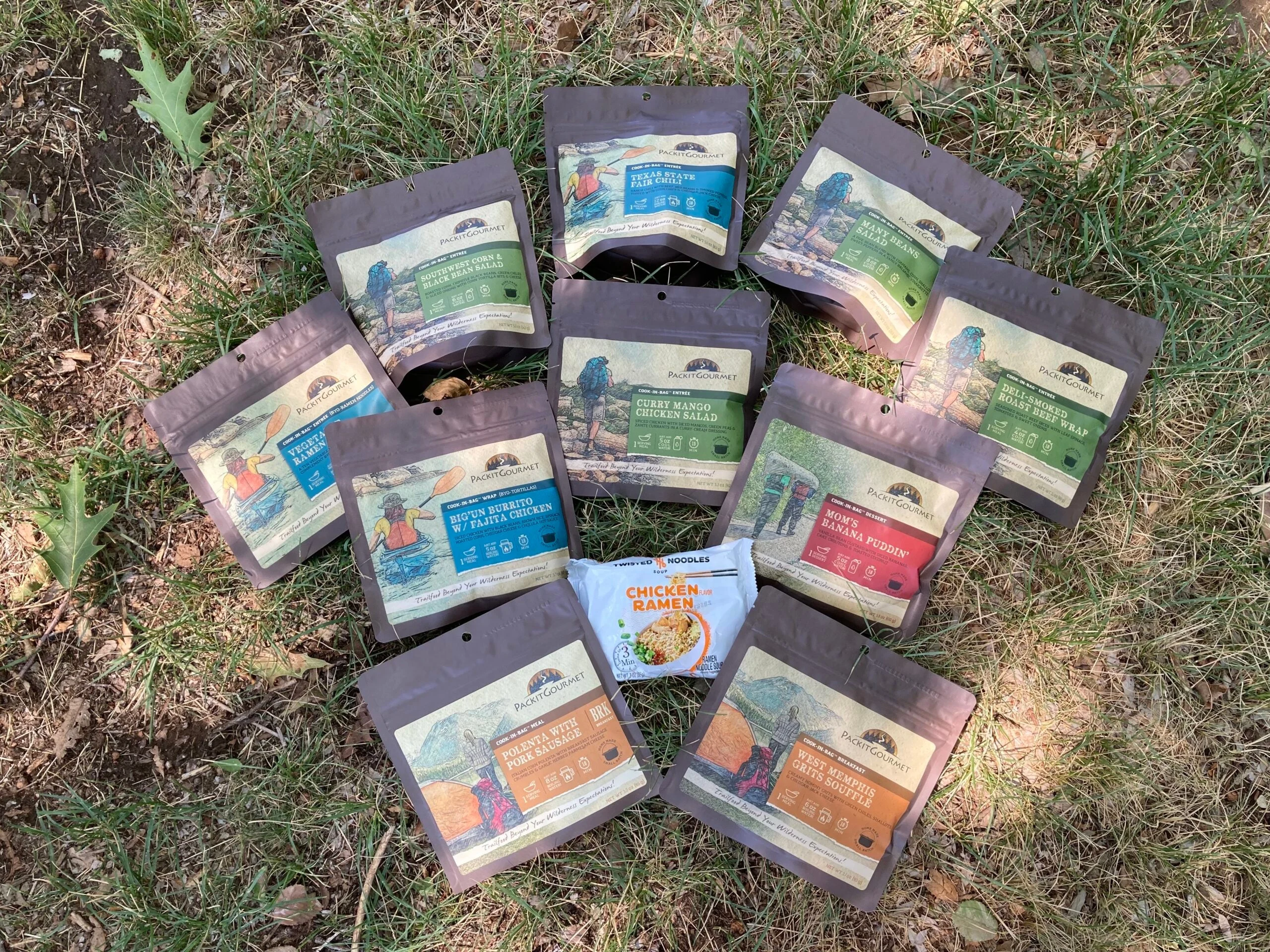
While I chose Packit Gourmet as the best cold soak backpacking meal, their Texas State Fair Chili also received a high ranking from our testers, especially because of the tortilla chip and cheese toppings. The price is high for the amount of food you get, but I can see why since it is a smaller company. I’d also like to see more transparency easily accessible on their website regarding packaging materials and ingredient sourcing.
Best Snacks: Patagonia Provisions
Specs
Cooking Method: In Pot or No Cooking
Average Cook Time: 10 minutes
Package Materials: Cardboard, aluminum, heat-resistant plastic
Dietary Options: Vegan, gluten-free
Meal Options: Soups, fish, snacks
Pros
Regenerative organic-certified
Responsible sourcing for all products
Transparent sustainability practices
Excellent food quality and flavor
Most of their foods require no cooking
Cons
Limited meal options; primarily focuses on packaged seafood
More expensive
While Patagonia Provisions offers a few meal options (like black bean soup), they’re better known for their wide selection of packaged fish and meat. The smoked salmon and venison links ended them up in the best snacks category, but the black bean soup was also among the highest-ranking meals throughout our testing. I chose not to put them in a meal-specific category because of the limited options.
The Patagonia Provisions snacks and pantry items are delicious and highly portable, making them easy to group within the world of backpacking meals. The smoked salmon was a particular favorite among our testers, many of whom remarked that they wouldn’t have thought to bring packaged fish along camping, but they will in the future. The salmon is excellent on its own or paired with crackers. We all agreed it’s also a perfect companion to another meal as a fresher way to boost your protein on the trail.
The venison links were less popular among testers, and for the price, it would be nice if more was included in the package. Regardless, having some venison ready to eat while on the trail is always an excellent option. If you aren’t a meat eater but want to check out quality meat-free jerky, check out Off-Piste Provisions.

Due to responsible sourcing practices, transparency in their entire production and product development process, and quality of ingredients, Patagonia Provisions can easily become a staple among your trail food or even in your pantry.
Best Smoothie: Switchback
Specs
Cooking Method: Shaker bottle
Average Cook Time: 10 seconds
Package Materials: N/A
Dietary Options: Vegan
Meal Options: Smoothie
Pros
Mixes well in water alone
Real ingredients (freeze-dried fruits and vegetables)
No added sugar
3-5 cups of fruits and vegetables per serving
It actually tastes good
Cons
Price
Only three flavors
It can be hard to get enough fruits and veggies while you’re on the trail, and while some green juice powders can do the trick, they usually don’t taste that good. Switchback is a new and upcoming company based out of Minnesota. They make a unique produce powder that contains up to five cups of fruits and vegetables in each serving. While it may be surprising when you taste it, there are no added sugars or fillers. It’s just real food made to be portable. Utilizing freeze-dried fruits and vegetables, they’ve released three flavors: banana berry bite, jungle mango, and tropical roar.
While mixing the powders with water works best in a shaker bottle, you can also blend it in a standard water bottle—you just may need to shake it longer. The mix of fruits they’ve chosen balances out the kale and beets, making the flavors more palatable. The smoothie recipes were developed alongside the founder’s children, so yes, even kids like them and endorse that they actually taste good.

They seem expensive for what you get, but I enjoy having them on the trail for a nutritional boost.
Best Bundle: Good To-Go
Specs
Cooking Method: Pouch
Average Cook Time: 15 minutes
Package Materials: Retort pouch
Dietary Options: Vegan, pescatarian, gluten-free, nut-free, dairy-free
Meal Options: Breakfast, entrees
Pros
Made with quality ingredients in the USA
Allergen friendly
Real, whole-food ingredients in all meals
Good value for the price
Bundle options available
Affordable price
Cons
Not the most flavorful
Bigger serving sizes would be nice
Plant-based options are not very calorie dense
Some meals have long cook times (20 minutes)
Good to Go is a brand that should be noted as a pioneer of the whole foods movement in the backpacking meal world. They’re dedicated to developing recipes that are approachable to a broad audience and made with ethically sourced ingredients. While they offer a wider range of entree items, they also have some excellent breakfast options, including a classic oatmeal and vegetarian breakfast hash. Specific recipes are far more flavorful than others, and if you’re not a fan of spicy things, steer clear of the Thai curry. My favorite recipe from Good to Go is their Bibimbap, a flavorful Korean-inspired dish.
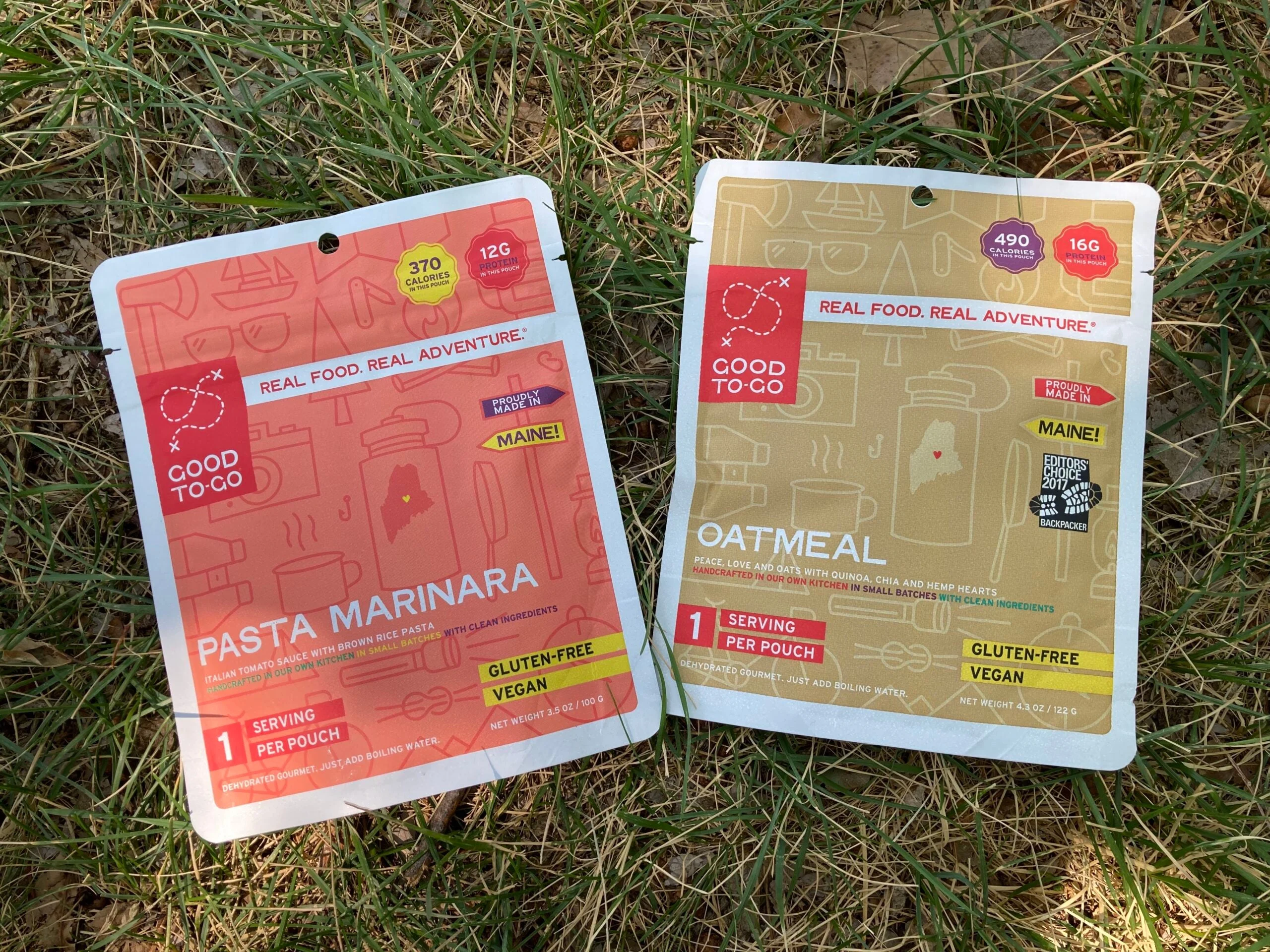
The meat-based meals offer an unbeatable price-to-calorie ratio, but the plant-based options are somewhat lacking. The meals taste good, but the single-serving is too small and isn’t as calorie dense as I need after a long hike. While they set the stage for what has become the norm for pre-made backpacking meals, their long cook times and overall flavor profile do put them a bit short of competitors like Pinnacle Foods and Gastro Gnome. We still recommend them as the perfect option for anyone that has dietary restrictions or is looking for more of a mid-range meal option that is both affordable and tastes good.
Best Budget: RightOnTrek
Specs
Cooking Method: In pot
Average Cook Time: 10 minutes
Package Materials: Sustainable bio-based packaging
Dietary Options: Vegan, no gluten, keto
Meal Options: Breakfast, entree
Pros
Available in group serving sizes (1P, 2P, 4P)
Affordable price
Made in the USA
Variety of recipes to choose from
Cons
Plant-based flavor profiles can be improved
Cannot cook in bag; you’ll have a dirty pot
If you’re looking for a backpacking meal that offers the best bang for your buck and still tastes good, RightOnTrek is the way to go. Ranging in price from $9 to $15, these meals are surprisingly flavorful and calorie dense, and they come in suitable serving sizes for backcountry dining. I can’t say that their meals ranked the highest in taste during testing, but they were suitable for a backpacking meal. Regarding flavor, their meat-based options ranked higher than their plant-based ones.
Their packaging is unique compared to competitors that use omnibiodegrdable packaging. RightOnTrek’s bio-based packaging preserves the food, but you must cook it in your pot, not the pouch. While this is a little inconvenient, the nice thing is that you can burn the package when you’re finished in a campfire or even a biofuel stove. Although their meals require cooking in a pot, their cook time is only about 10 minutes, faster than some cook-in-pouch meals. I don’t like eating meals out of the pouch anyway, so cleaning my pot after a camp meal is to be expected.
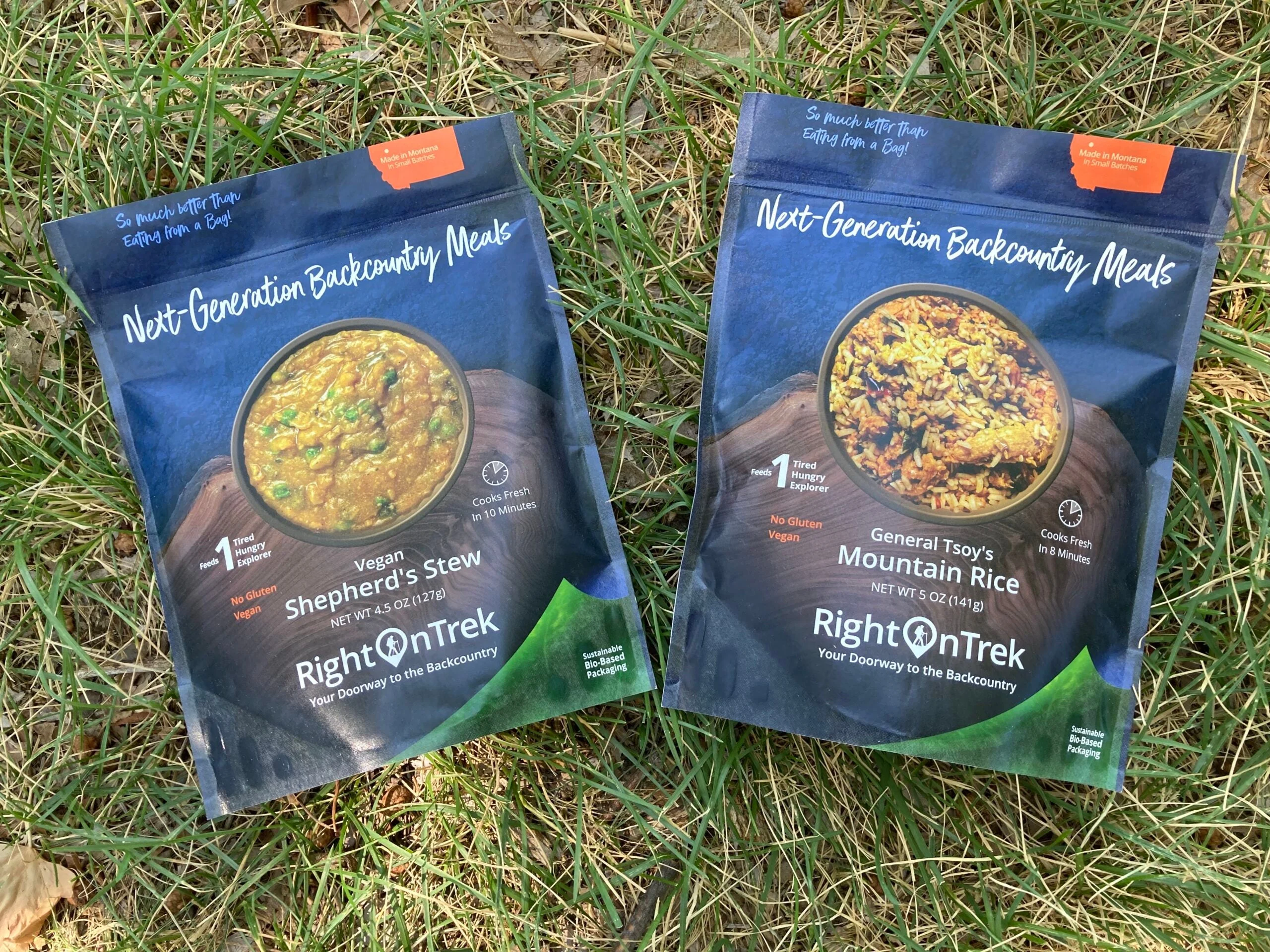
What’s more, RightOnTrek is more than just a backpacking meal company. They offer a range of services, including gear rentals in Montana and a meal planner. To make trip planning even easier, you can also purchase a complete day’s worth of provisions.
How to Choose a Backpacking Meal
Type of Trip
What does the type of trip have to do with the food you eat? For longer, more strenuous treks, weight and calorie density can be important. Some hikers may prefer ultralight methods that mean cutting out a backpacking stove altogether, so consider if there are cold soaking options. You should also consider the size of the meal, along with nutritional value. After all, what you eat fuels your hike, so make sure it’s good.
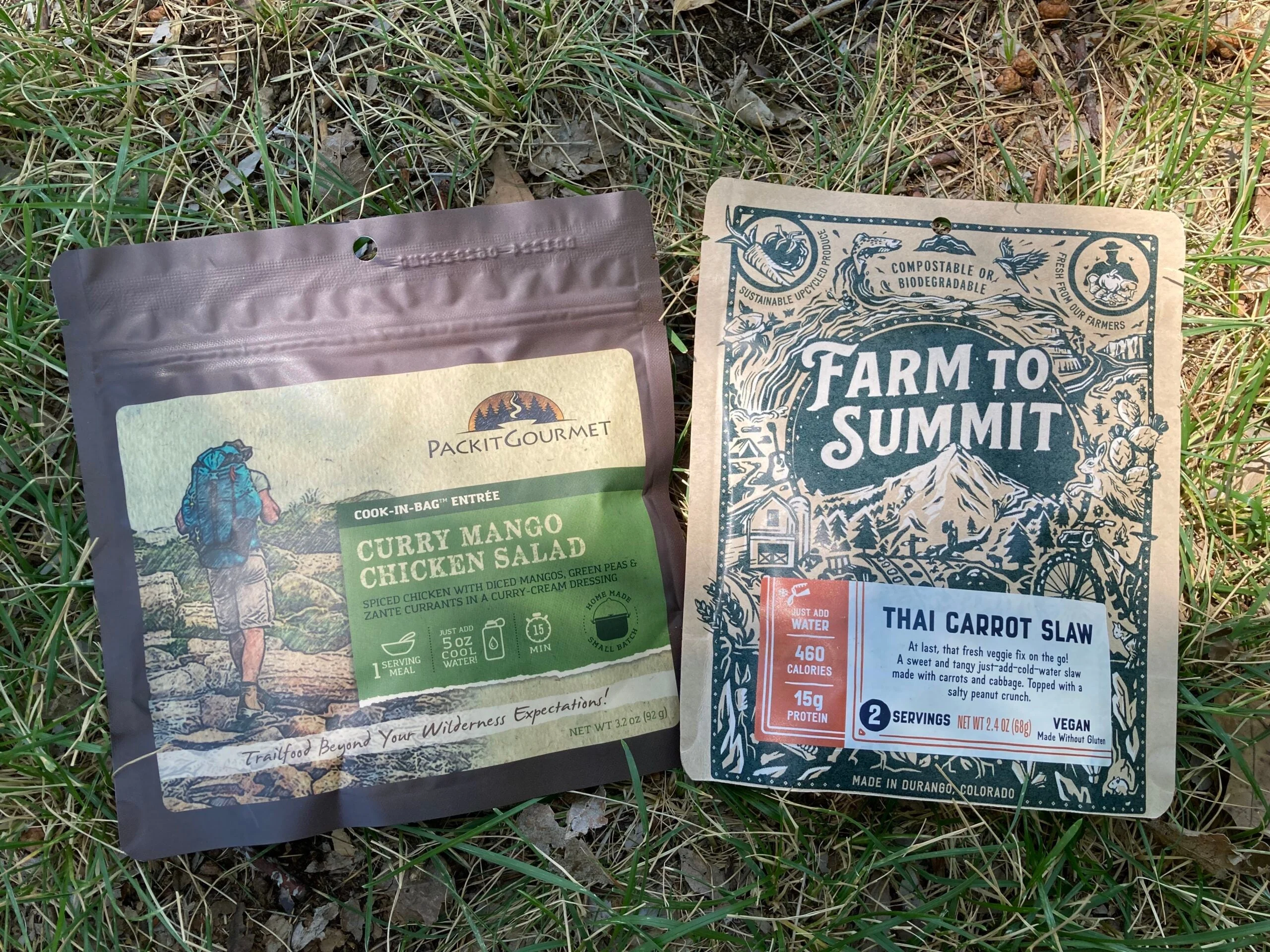
Two examples of cold soak meals – Meg Carney
The length of your hike can also influence buying decisions. For instance, a long-distance hiker may opt for a brand with bundle options or thru hike-specific packages versus buying individual meals. Some companies only offer entrees, so consider if you’d like a one-stop shop where it’s possible to buy everything from coffee all the way to after-dinner dessert or if shopping for the evening meal is the only pre-made meal you’re packing.
Lastly, know the size of your party. Things like dietary restrictions can get in the way, but if everyone in the group can eat the same things, buying from companies selling bulk meals can cut down on packaging and make cooking even more manageable.
Dietary Needs and Preferences
As someone with a particular diet and many dietary restrictions, it’s hard to find good camping meals. Plus, when backpacking, eating prepackaged food can be hard on your digestive system, so it’s ideal to have as many natural whole foods as possible. Many, if not all, of the brands we covered in this review are made from real food ingredients.
With the growing number of people entering the outdoors, it is nice that backpacking food companies are starting to meet the demand for special diets and accommodate common allergies. You’ll notice that most brands featured above have at least some vegetarian, vegan, and gluten-free options. The most inclusive brands also offer soy-free, nut-free, dairy-free, and keto meals.
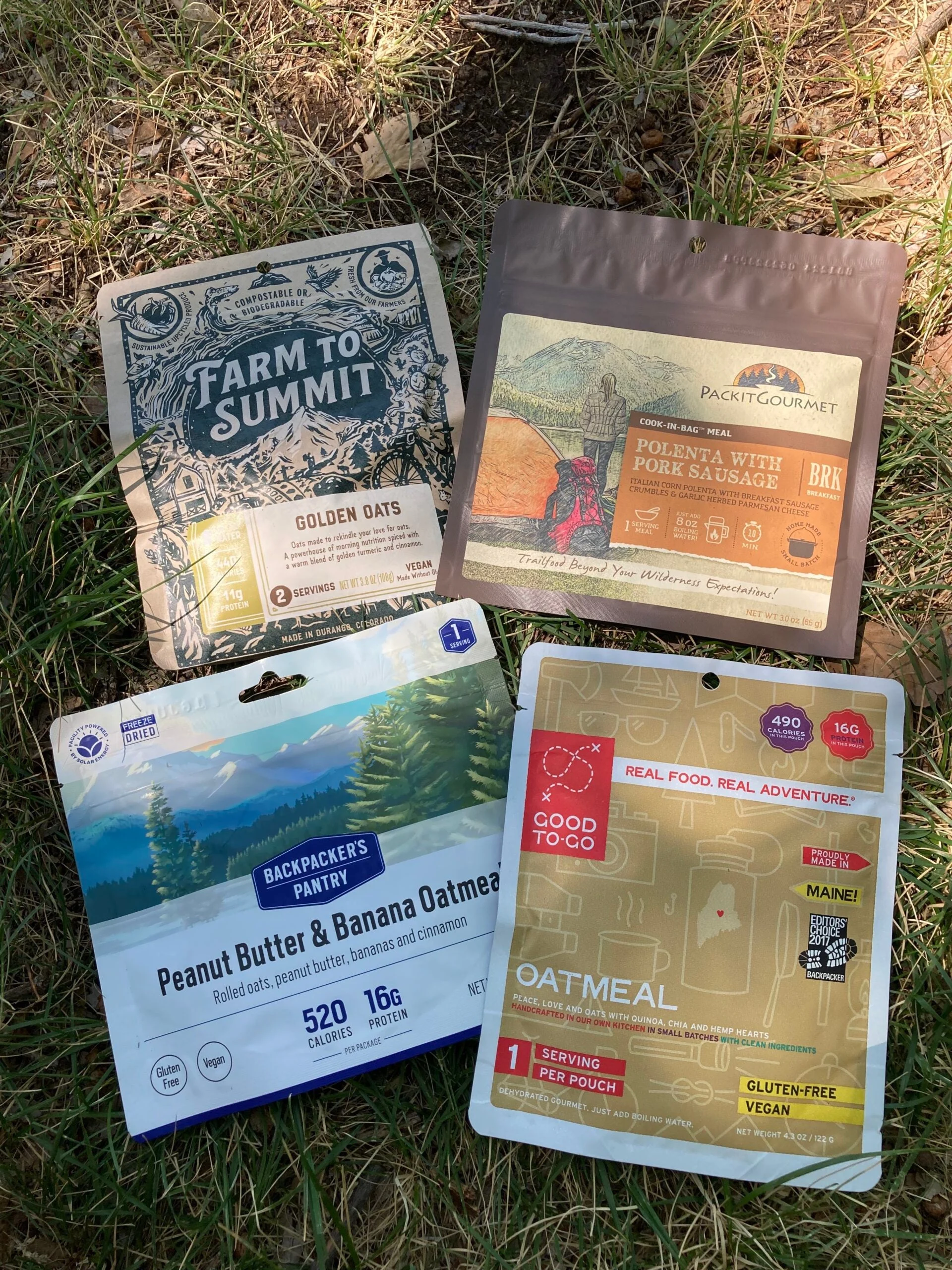
Another concern of more health-conscious backpackers may be the sodium content. Sodium is often added as a natural preservative, and let’s face it, after a long day of hiking, you’re probably craving a little extra salt. Still, depending on the hike and your specific dietary needs, paying attention to the sodium content may be necessary. Although Pinnacle Foods was rated as our top pick for meals, they have one of the highest sodium contents (around 1500 mg/serving) we save within the meals. Good-To-Go is one of the best options if you’re looking for options with lower sodium content.
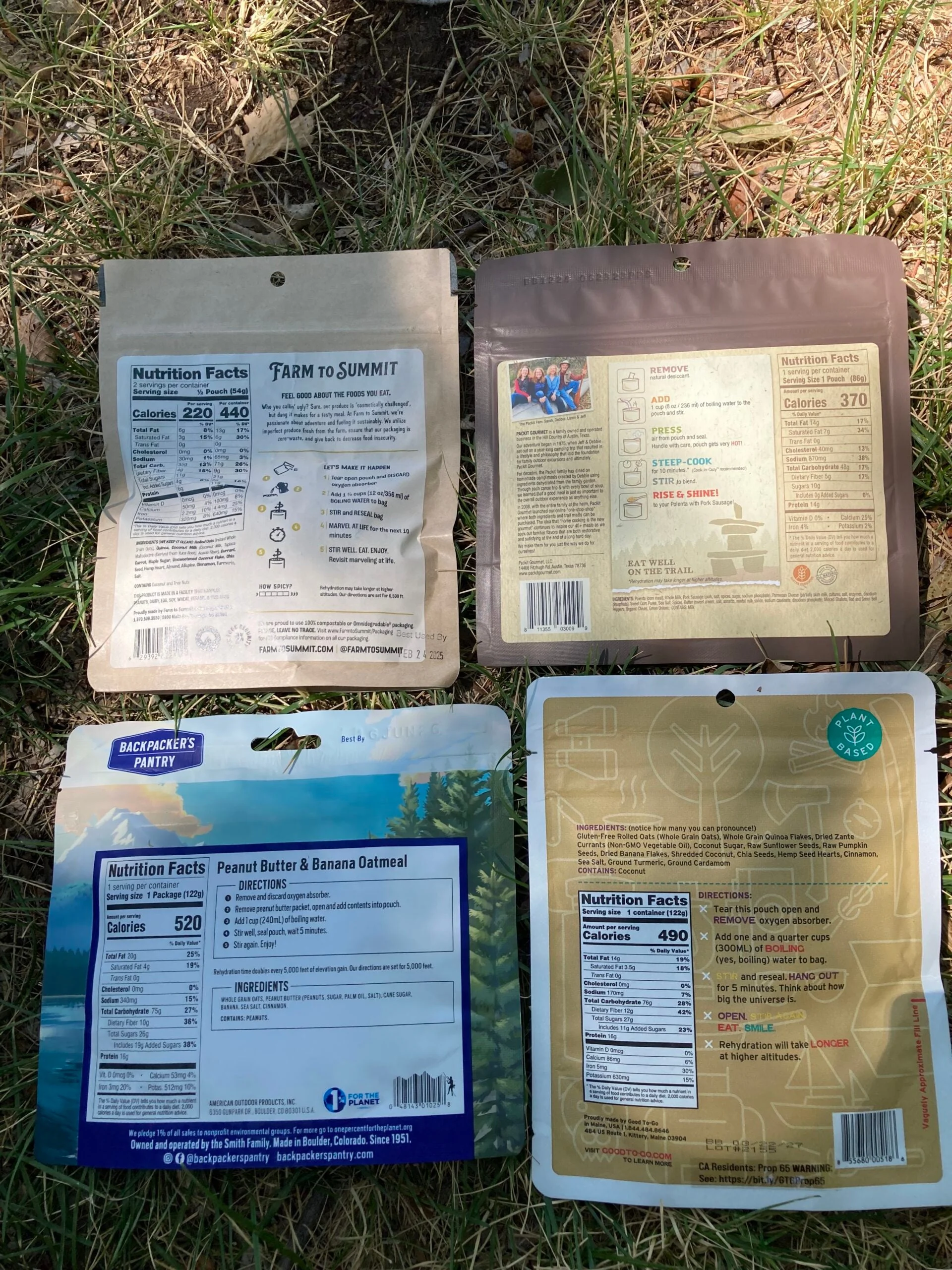
Calories and Nutrition
The caloric and general nutritional value needed for the meal largely depends on the person and how strenuous the hike is. Consider how much you eat on a typical day vs. days with high activity levels; how much does it differ? Learning to listen to your body can take some trial and error, and if you’re chronically tired or worn out on backpacking trips, evaluating what you’re eating and what it is providing your body may be worth considering.
All the backpacking meal companies covered in this article include nutritional information for their meals on their websites. On the front of most meal packages, they often list the calories per serving. Since the calories you may need will be much different than someone else, I will not provide advice or a way to equate how many calories you need based on how many you burned or the elevation of the hike, etc. Those are questions best answered with the guidance of a dietary professional. Even if you don’t necessarily figure out an exact number, paying attention to what the meal offers in terms of calories and general nutritional value is essential.
Looking at the back of the pouch or the listing on the company website, you’ll find a calorie number listed. Some companies may denote the calories for a single serving and the calorie contents of the entire pouch. So, pay attention to if there is more than one serving within the meal package. Companies vary in serving size, which influences the calories. For instance, Good-To-Go meals have much smaller servings sizes than many other brands, which leads them to often have a lower calorie count on average.
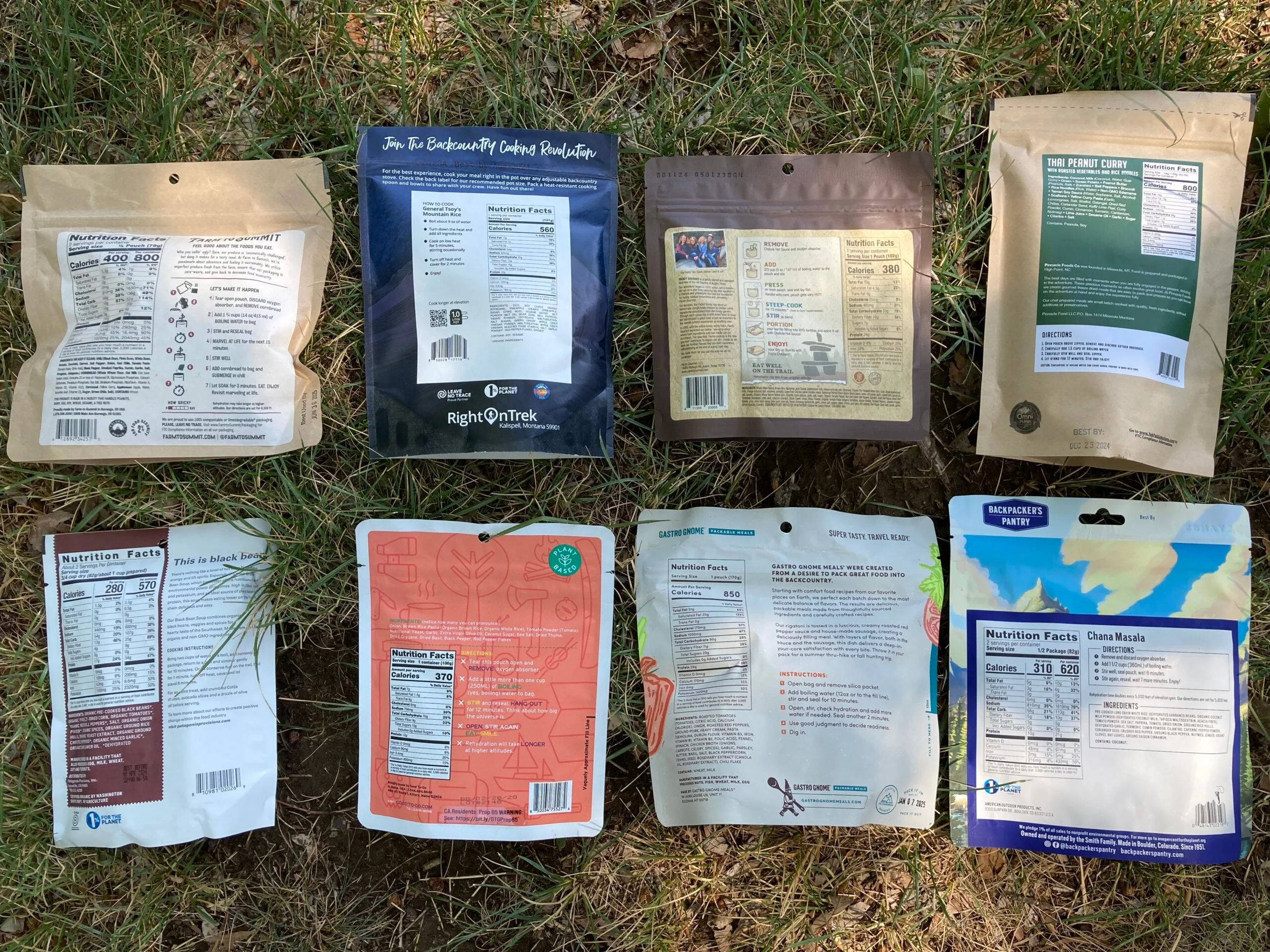
The serving size doesn’t always mean much to me on a strenuous hike. Trail hunger kicks in at the end of the day, and I will eat a lot. For brands like Good-To-Go, there is no question that I need double the serving size for a trip like that, but with Fernweh Food Co, I can satisfy my hunger with one pouch and a fig bar for dessert. What works for one trip or person might not work for you, so plan accordingly and listen to your body.
Cooking Requirements
There are two ways to cook pre-made backpacking meals: in the pouch and in your pot. Many backpackers favor the brands with meals designed to be cooked in the pouch as it saves on cleanup in camp and preserves fuel. Brands like RightOnTrek, on the other hand, require the meal to be cooked in a pot but have a similar cook time of around 10 minutes. RightOnTrek specifically is an interesting brand because this choice revolves around creating a more sustainable packaging option that you can safely burn after use.
The cook time of the pre-made meal also varies from brand and may differ depending on if it is dehydrated or freeze-dried. Most meal companies will have cook times ranging from 5 to 20 minutes. While a 20-minute cook time seems like a long wait, I’ve found that if you plan it correctly, it works perfectly in the dynamic of setting up camp. Arrive to camp, boil water, pour it in the pouch, set up camp, and usually, when you’re ready to sit down and relax, your food is either ready or getting very close. Meals that require simmering for around 10 minutes might mean having to stop and stir occasionally and require a higher level of attention.
Ingredient Sourcing and Packaging Materials
Looking at the environmental impact of a company can be time-consuming. Honestly, some of the brands mentioned in our review could improve the accessibility to information like ingredient sourcing, production, and packaging materials on their website. Other brands like Patagonia Provisions, Backpacker’s Pantry, and Farm to Summit explicitly state their intentions behind crafting environmentally responsible food.
When compiling options for backpacking meals, it is easy to get stuck on things like the packaging materials alone. While having sustainable packaging is nice, it isn’t the only factor or even the biggest player regarding the environmental impact of the company’s carbon footprint. For instance, Backapcker’s Pantry may still use retort pouches. Still, as a company, they’re transparent in their production and make it clear that things like solar-powered production facilities and sustainable work environments are a priority.
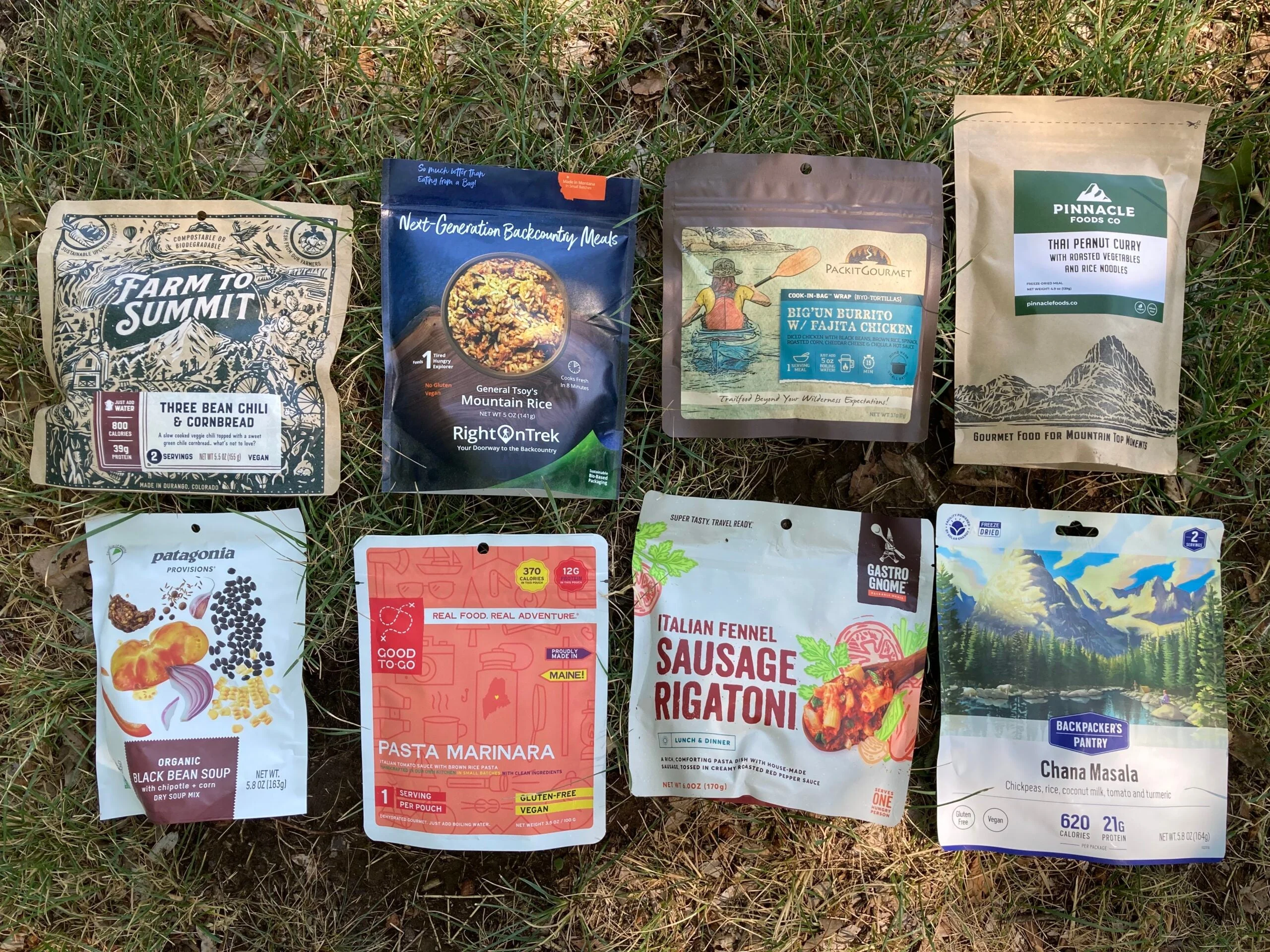
Then you have brands like Gastro Gnome and Farm to Summit dedicated to responsible ingredient sourcing, working closely with local farmers to reduce food waste and give back to their communities. All of these aspects are things I consider when I purchase food in my daily life, so why wouldn’t they be considerations for my trail food as well?
FAQs
Q: What should I eat when backpacking?
Short answer: eat food you like while you’re backpacking. Meals and snacks should be portable, non-perishable, and quickly prepared for the best results. Still, the most important thing is that you find foods that you enjoy, meet your nutritional needs, and supply enough energy to continue on your hike.
Q: What’s the healthiest backpacking food?
Whole foods are the healthiest backpacking food. While it can be nice to have things like corn chips and Snickers at times, opting for nuts, dried fruits, and meals that offer a range of vegetable, grain, and protein options can help you feel good on the trail.
Q: What is the best energy food for hiking?
Energy-dense snacks tend to be high in carbohydrates and sugars. If you’re looking for the best whole food options for quick energy, try dried fruits like mangos or dates. Snacks like nuts, jerky, or fish can also provide longer-lasting energy.
Q: How often should you eat when backpacking?
Having a small breakfast and lunch when you’re ready is OK, but avoid large meals while hiking. Snacking regularly while you hike can help you maintain energy and prevent bonking (low blood sugar). Eating small amounts every 1-2 hours is efficient for most hikers. Then, having a larger meal in the evening is suggested so you’re not bogged down while you hike and your body has time to digest the food.
Final Thoughts
If you’re like me and wrote off backpacking meals due to cost or flavor, it’s time to reevaluate the options. The meals available today range in price and flavor complexity, allowing backpacking meals to be approachable no matter your preferences. While some are still better than others, it’s nice that with so many options, it is genuinely possible to meet the needs of anyone entering the outdoors.
For this review, we only included brands that use natural whole food ingredients and that have options to fit different dietary restrictions. While we only tested some of these brands out on the trail, we ranked all of them during a blind taste test to rate the quality of each meal compared to their competitors. We also factored cook time, ingredient sourcing, packaging materials, calorie density, and price into our final results for the best backpacking meals.

Why Trust Us
For more than 125 years, Field & Stream has been providing readers with honest and authentic coverage of outdoor gear. Our writers and editors eat, sleep, and breathe the outdoors, and that passion comes through in our product reviews. You can count on F&S to keep you up to date on the best new gear. And when we write about a product—whether it’s a bass lure or a backpack—we cover the good and the bad, so you know exactly what to expect before you decide to make a purchase.

